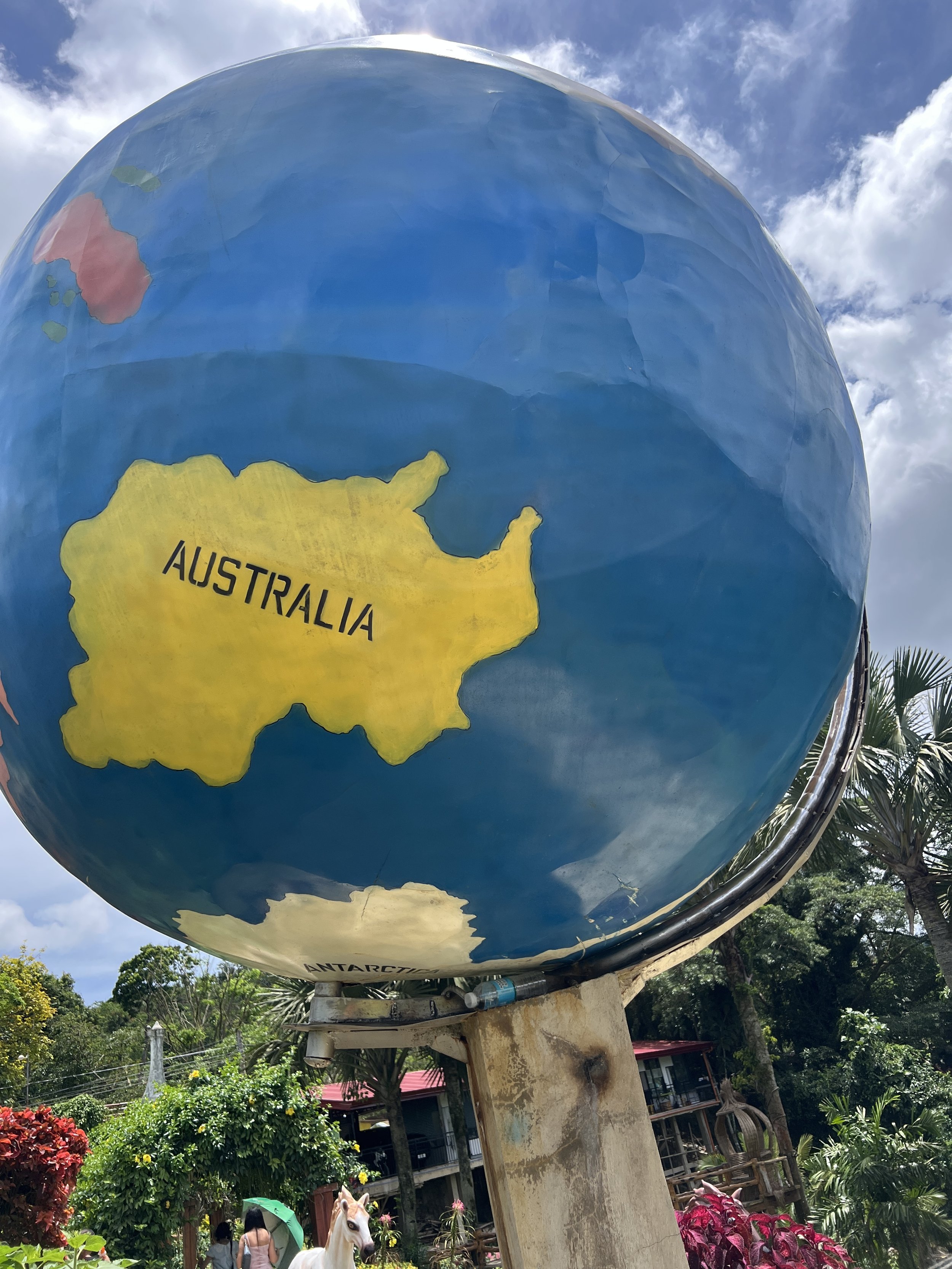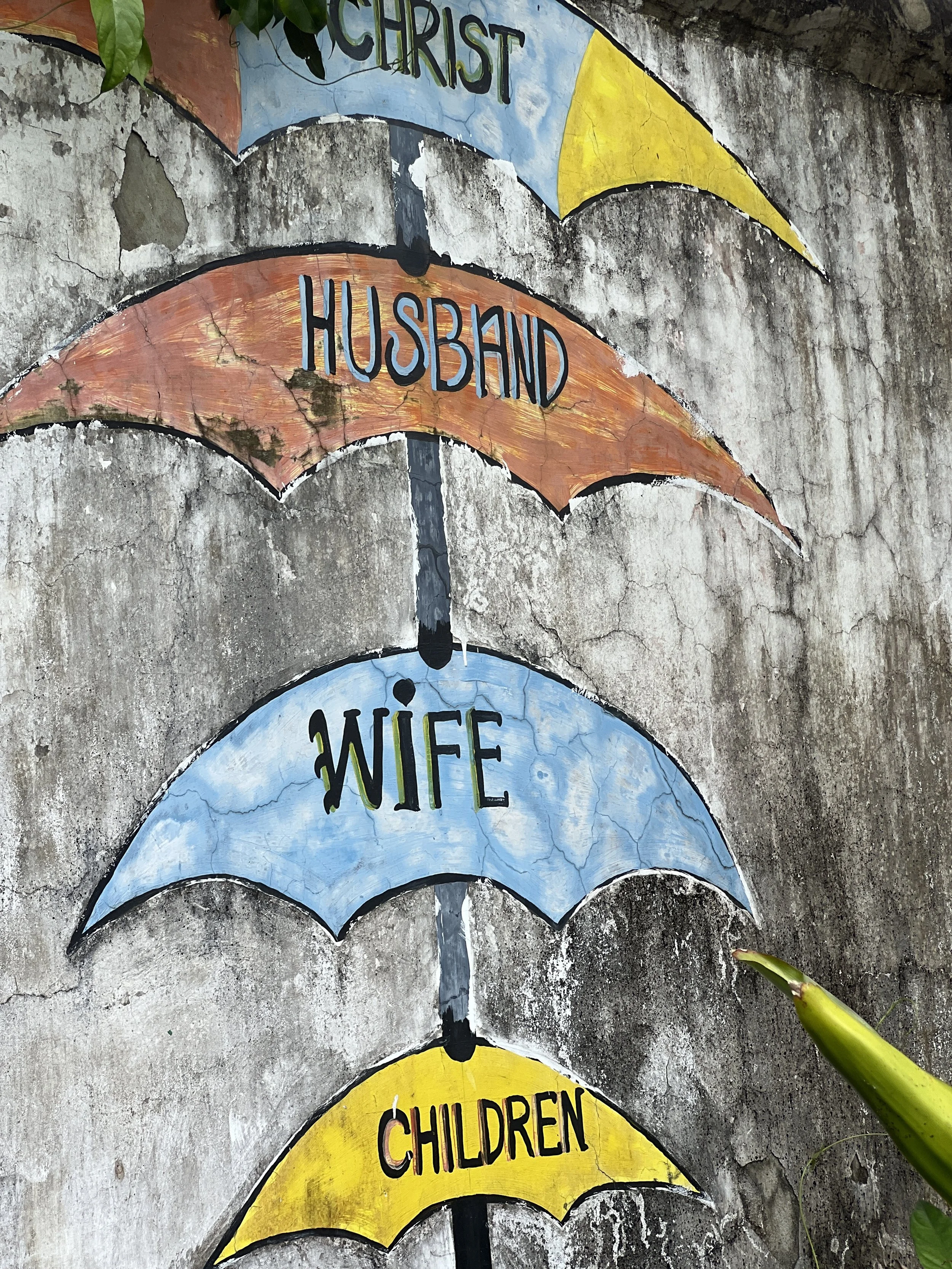THE ART OF ENOUGH
“You keep it, I am happy, I have enough,” Sonya said with an enormous smile when we offered her money for showing us around her village.
In about 40°C radiating heat, we found her raking cashews spread out on a tarpaulin on a cement sidewalk. A homemade wooden rake shifted the nuts that were still in their shells. We asked another raker, “How do you shell them?”, “Manually,” he said, expressionless, pronouncing the word with a sharp ’N’. We laughed sheepishly, of course.
Sonya set her eyes on us and marched off to collect her white umbrella. She discharged it with authoritarian fanfare, like a butler, and launched it above her head in a salute to officiously signal, “Right then, let’s go.”
Compared to Indonesia and the Pacific Islands, people in the Philippines have largely been disinterested in connecting with us. Most engagements have been commercial.
Our tour guide Justin, had welcome air conditioning in his car but had absolutely no knowledge of his city, Cebu. We had travelled a long way to soak in Magellan’s story (Ferdinand Magellan was a Portuguese explorer who led the first expedition to circumnavigate the globe; he was killed in Cebu City in the Philippines in 1521). So we booked Justin for a 10-site city tour.
Stop one, the Heritage of Cebu Monument, is a glorious sculptural tableau, a powerful and beautiful artistic representation of the city’s rich and layered history. We glanced expectantly at Justin: he pointed upwards, flung his arm skyward, saying “That’s Magellan, ahem….. and some other old guys”.
We shrugged our shoulders and adjusted our expectations.
We visited a Spanish fort, a Chinese temple, had lunch at a French restaurant, and strolled a sculpture garden where women had their Christianly place and New Zealand was missing off the map. That was enough, see you Cebu!
True insights about the Filipino way of life came from our Subic Bay taxi drivers. We had two: Jessie and Jeremy and we deliberately shared our patronage between the pair. Both drivers had young families, and their young wives were offshore earning money, an accepted way to get ahead. One wife worked as a hairdresser 6 days a week and the other as a cleaner, both on 3-year assignments in Abu Dhabi. Their savings would be taxed on re-entry back into the country. Grandparents supported their arrangements with childcare and shared accommodation. Both boys were matter-of-fact about the situation. When we asked if they made enough money driving, one said, “Barely”.
Filipinos are a compliant bunch: they adhere to the rules. They follow signs and instructions and expect you to too. They are courteous drivers, often waving each other ahead. Jaywalking is a no-no, with a $1,000 fine, as we almost learnt the hard way. The default response to any question is a quick-draw ‘yes’; we learnt to wait a beat for the real, and considered, answer. They work hard and the hustle is real.
They were kind to us and tried really hard. Constantly being called ma’am is uncomfortable, a little grating, and efforts to hold an umbrella over my head, rain or shine, were awkward. We drew the line at them pushing our supermarket trolley. Doors were opened, bags were carried. I urged them to please stop, to no avail. They couldn’t do enough in their efforts to take care of us.
As we waltzed through the streets of Silanga with Sonya, voices called out to her from inside houses with questions. “Sightseers!!” were the only words we recognised in her replies. She taught herself to speak English from the internet, “I downloaded the translations,” she said.
She proudly trotted on: “This way,” she said through knee-deep water. It was refreshing when she refused the cash; she only insisted on having a photo taken and becoming friends on Facebook, both of which we obliged.
Silanga village is nestled in Tay Tay Bay, a largely untouched corner of the Palawan Islands. I think about Sonya as we sail away.
I listen to a Taylor Swift medley as a nod to Tay Tay Bay. I consider the triumph of Taylor recently buying back the rights to the master recordings of her first six albums, regaining full ownership of her entire music catalogue. Bravo! I think about this in contrast to Sonya living a simple but good life, not wanting more.
I spy a large out-of-place Hollywood-style sign on a mountainside in the distance that says “TAY TAY”, and I think about how strange the world is.
I think about Sonya and her cashews: her money literally growing on trees. And I think about how Sonya knows that the art of having enough is to want less.
Bravo!






